What are film sanding discs?
Got problems getting a perfect finish? Want sanding results that impress? Film sanding discs make a big difference in your work.
Film sanding discs use a tough polyester film instead of paper. This makes them very strong. They last longer and resist tearing. They help you get a smooth, even surface on wood, metal, or car parts. This gives a high-quality finish.
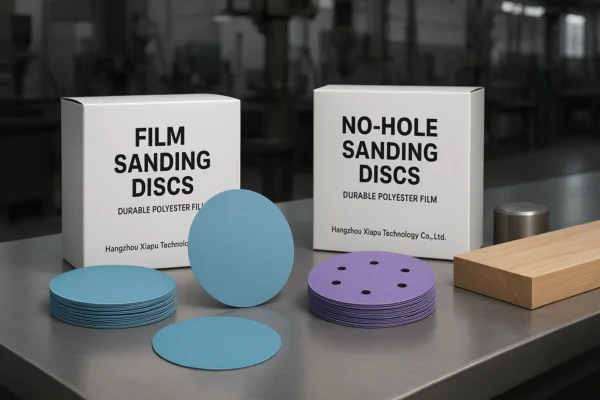
I have seen many people use standard paper discs and get frustrated. They tear easily. They don’t give a consistent scratch pattern. My company, Hangzhou Sharpe, focuses on high-performance abrasives. We know the backing material is key. That is why we build top film discs. Let me tell you more about these discs and other sanding questions you might have.
Are mesh sanding discs any good?
Is dust messing up your sanding? Does your sandpaper clog fast? Mesh discs can solve these headaches for you.
Mesh sanding discs are very effective. They have an open net structure. This lets dust go right through the disc and into your vacuum system. This keeps the disc from clogging. It also keeps your workspace clean. This leads to longer disc life and a much better final finish.
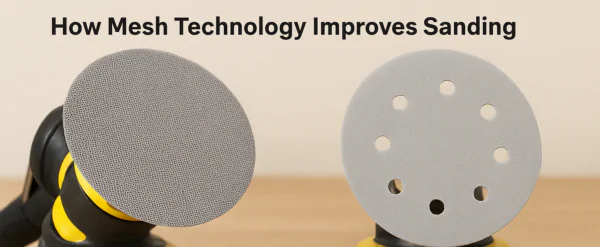
Mesh discs are more than just ‘good’. They are a step up for many sanding jobs. I have seen clients switch to our mesh discs and greatly improve their process. The main benefit is the dust extraction. With traditional discs, even with vacuum holes, some dust stays under the disc. This dust acts like a cushion. It can also scratch the surface. A mesh disc has thousands of tiny holes across the whole surface. This pulls away almost all the dust.
How Mesh Technology Improves Sanding
This design changes how sanding works.
- Dust Control: The biggest gain is dust removal. Less dust means a healthier workshop. It also means less cleanup.
- Disc Life: When dust does not clog the abrasive grains, the disc stays sharp longer. You use fewer discs. This saves money.
- Finish Quality: With no dust particles between the disc and the surface, the abrasive grains cut more evenly. This reduces random scratches. You get a smoother, more uniform finish.
- Versatility: Mesh discs work well on many materials. These include wood, paint, fillers, and composites. They are great for automotive bodywork and furniture making.
Comparing Mesh and Traditional Holed Discs
We make both types at Hangzhou Sharpe. We see the difference mesh makes. Look at this simple comparison:
| Feature | Mesh Sanding Discs | Traditional Holed Discs |
|---|---|---|
| Dust Extraction | Excellent (Across entire surface) | Good (Only at hole locations) |
| Clogging | Very Low | Can Clog (Especially with soft materials) |
| Disc Life | Longer (Due to less clogging) | Shorter (Clogging reduces cutting) |
| Finish Consistency | Very High (Even scratch pattern) | Good (Can have random scratches) |
| Airflow | High (Full vacuum pull) | Limited (Only at hole points) |
My team at Hangzhou Sharpe put a lot of effort into our mesh abrasive technology. We develop our own raw materials. This ensures the mesh is strong and the grit stays put. We use advanced machines for production. This means our mesh discs perform reliably. They give consistent results for our clients.
So, if you want cleaner, faster, and better sanding, mesh discs are a good choice.
Can l use sanding discs without holes?
Do you have a sander with no vacuum holes? Or do you sand by hand? You might wonder about discs without holes.
Yes, you can definitely use sanding discs without holes. They are suitable for certain tasks. These tasks include hand sanding or wet sanding. They work on sanders that do not have dust extraction ports. They give a full abrasive contact area.
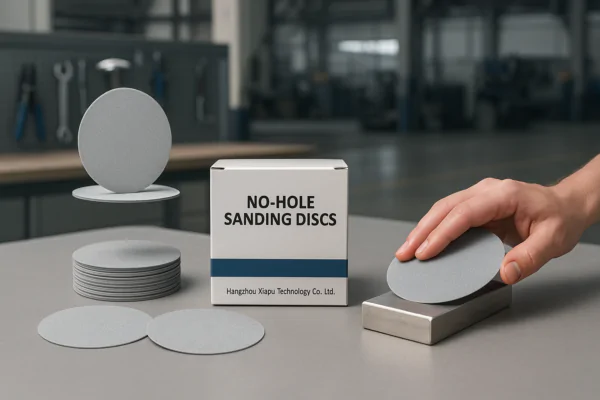
Using discs without holes depends on your tool and your process. I have seen many workshops that still rely on hand sanding or older machines. In these cases, holed discs offer no benefit for dust extraction. A no-hole disc gives you maximum abrasive surface contact. This can be good for certain jobs.
When to Choose Discs Without Holes
No-hole discs are best in specific situations.
- Hand Sanding: When you sand by hand with a block, there is no built-in vacuum. A no-hole disc gives the most surface area to work with.
- Wet Sanding: Wet sanding uses liquid (like water or oil) to manage dust and cool the surface. Dust extraction is not used. No-hole discs are perfect for this. They don’t pull water into the sander motor.
- Sanders Without Vacuum: Some tools, especially older models or certain rotary tools, do not have dust ports. A no-hole disc is the only option that makes sense here.
- Edge Sanding: Sometimes, when sanding edges, dust extraction is less critical. A no-hole disc provides a solid contact point on the edge.
Trade-offs: Holed vs. No-Hole
There is a clear trade-off, mostly about dust.
| Feature | No-Hole Sanding Discs | Holed or Multi-Hole Discs |
|---|---|---|
| Dust Extraction | None (Requires external methods) | Good to Excellent (With vacuum system) |
| Surface Contact | Full (100% abrasive area) | Reduced (Area taken by holes) |
| Application Fit | Hand sanding, Wet sanding, No-vacuum tools | Dry sanding with vacuum sanders |
| Clogging Risk | Higher (Without extraction) | Lower (With effective extraction) |
| Scratch Pattern | Can get dust scratches | Cleaner cuts (With dust removal) |
At Hangzhou Sharpe, we offer discs in many patterns, including no-hole. We understand that different clients have different needs and equipment. We help clients choose the right pattern. This ensures they get the best performance from our abrasives, whatever their setup. If you use a vacuum sander, I recommend using discs with the correct hole pattern. But for hand sanding or wet work, no-hole discs are perfectly fine and often better.
The key is matching the disc to your tool and the job.
What is the difference between grinding and sanding discs?
Are you cutting metal or smoothing wood? The disc you need is different. People sometimes confuse grinding and sanding discs. They have very different jobs.
Grinding discs are built for heavy material removal. They cut and shape hard materials like metal, stone, or concrete. You use them on high-speed angle grinders. Sanding discs are for smoothing surfaces, preparing for finish, or light material removal. You use them on slower orbital or rotary sanders on materials like wood, paint, or fillers.
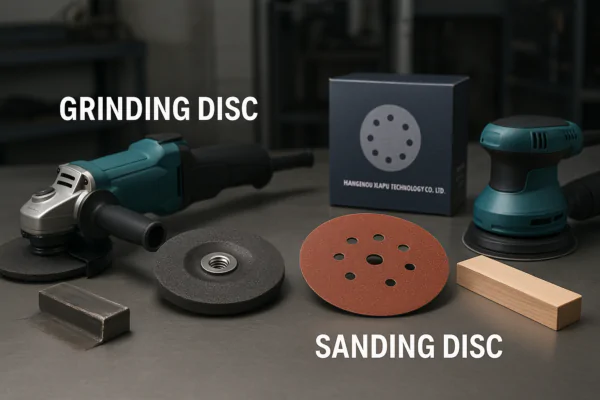
I often talk to clients who need abrasives for finishing. It is important they understand the difference. Using the wrong disc on the wrong tool is unsafe. It also gives bad results. My company specializes in high-end sanding abrasives. We focus on achieving smooth, precise finishes. We do not make heavy grinding wheels.
Key Differences Between Grinding and Sanding Discs
Here are the main points that set them apart.
- Purpose: Grinding removes a lot of material quickly. It shapes things. Sanding refines a surface. It prepares it for paint or polish.
- Tool: Grinding discs go on angle grinders. These run at very high speeds (often 8,000+ RPM). Sanding discs go on orbital sanders, random orbital sanders, or specialized sanding machines. These run at lower speeds (often 5,000-12,000 OPM – orbits per minute, which is different from RPM).
- Abrasive Type: Grinding discs use tougher, larger abrasive grains, often bonded with resin or ceramic. These grains can withstand high pressure and heat. Sanding discs use various grains like Aluminum Oxide, Ceramic, or Silicon Carbide. These are bonded to a backing. They are designed for controlled cutting and finishing.
- Backing Material: Grinding discs are thick, rigid bonded wheels. Sanding discs use flexible backings like paper, cloth, or film. This allows them to conform to shapes and work with orbital motion.
- Safety: Grinding discs can be dangerous if not used correctly due to high speed and material removal rate. Sanding is generally safer but still requires care (dust, eye protection).
Comparison Table: Grinding vs. Sanding
It is easy to see the difference when you look at what they do.
| Feature | Grinding Disc | Sanding Disc |
|---|---|---|
| Primary Use | Heavy material removal, Cutting | Surface preparation, Finishing |
| Common Tool | Angle Grinder | Orbital/DA Sander, Hand Block |
| Material Focus | Metal, Stone, Concrete | Wood, Paint, Filler, Composites |
| Abrasive Grit | Coarse (Often 24-80 grit) | Wide range (P40 to P3000+ grit) |
| Backing/Structure | Thick bonded wheel, Rigid | Flexible backing (Paper, Film, Cloth) |
| Speed | Very High RPM | Lower OPM/RPM |
| Finish Achieved | Rough, Shaped surface | Smooth, Refined surface |
At Hangzhou Sharpe, our strength is in making premium sanding discs. We focus on getting the best possible finish. Our film and mesh discs are examples of this. We invest in R&D and production to ensure our sanding products deliver top performance for demanding applications like automotive refinishing and furniture finishing.
Using the right tool and disc is crucial for success and safety in any abrasive work.
Conclusion
Choosing the right abrasive makes a big difference. Film and mesh discs improve finish and lifespan. No-hole discs fit specific needs. Know the gap between grinding and sanding.
You may also be interested in:

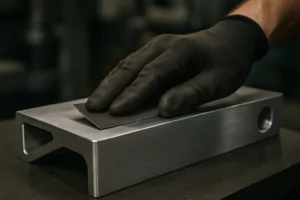
Best Sandpaper for Aluminum: NOVOGRIT's Guide to Flawless Finishes
What is the Best Type of Sandpaper to Use on Aluminum? Do you find yourself frustrated by sandpaper that gums up instantly when you try to smooth aluminum? It is
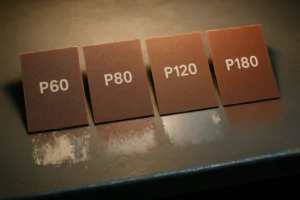
Best Sandpaper for Paint Removal: Grits, Types, & Tips | NOVOGRIT
What is the Best Sandpaper for Removing Paint? Are you tired of staring at chipped, peeling paint on your furniture, walls, or even your car? It’s a common problem, and
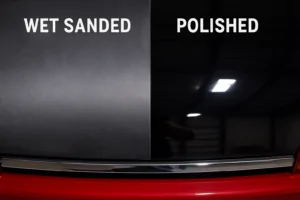
Automotive Wet Sanding: Supplies, Liquids & Best Sandpaper
Automotive Wet Sanding Supplies: What Do You Really Need? Wet sanding is a crucial technique in automotive refinishing, used to achieve a flawlessly smooth surface before painting or polishing. Unlike
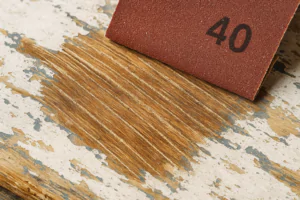
Best Sandpaper for Paint Removal & Grit Guide
What Is the Best Sandpaper for Removing Paint? Removing old paint can be a tedious job, but using the right sandpaper makes all the difference. It’s not just about grit;
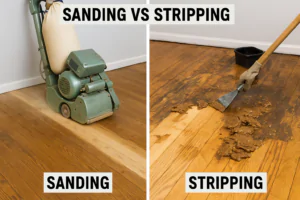
Hardwood Floor Sanding: Screen vs. Sandpaper & Best Practices
Sanding Screen vs. Sandpaper for Hardwood Floors: Which is Best? When you’re tackling hardwood floor projects, choosing the right abrasive is crucial for achieving a smooth, professional finish. Both sanding
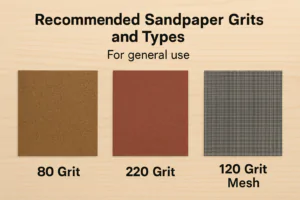
Paper Backing vs. Mesh Sanding Discs: Which Abrasive to Choose?
Paper Back vs. Mesh Sanding Discs: Which One Should You Pick? Choosing the right sanding disc backing can significantly impact your project’s efficiency and finish quality. Paper-backed discs are a
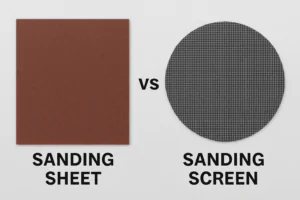
Sanding Mesh vs Paper: Which is More Economical and Better?
Is Sanding Mesh More Economical Than Sandpaper? Comparing Abrasive Costs When stocking up on abrasives, cost is always a factor. Paper sandpaper has traditionally been the standard, but newer mesh
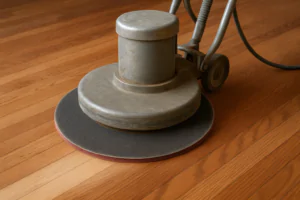
Sanding Nets & Screens Use Cases: When to Choose Mesh Abrasives
Sanding Nets and Screens: What Are Their Best Use Cases? When you encounter sanding nets or screens, you might wonder where they fit into your sanding projects. Unlike traditional solid-backed
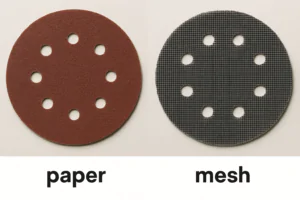
Paper vs. Mesh Sanding Discs: Which Abrasive to Choose?
Paper vs. Mesh Sanding Discs: Which Should You Buy? Choosing the right abrasive disc is essential for efficient and effective sanding. Two primary types dominate the market: traditional paper-backed discs
